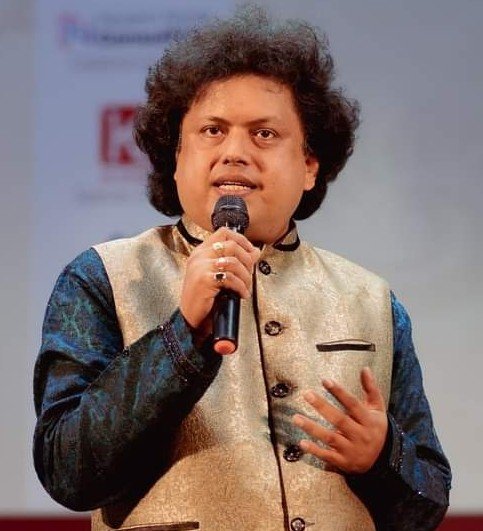
Education
Indian Classical Music has a long history from ancient times up to the present day. There were no written texts until the twentieth century so these traditions were therefore handed down in an oral tradition from teacher to student. So, there is great cultural depth in understanding music which is not just written notes but speaks directly to the heart. The student is brought into contact with the heart and soul of Indian life.
The Guru–Shishya tradition, or Parampara ("lineage"), denotes a succession of teachers and disciples in traditional Vedic culture. "Gu" means dark and "Ru" means light. So, "Guru" can be translated as darkness to light, or possibly one who leads from darkness to light. The Guru is a teacher who guides the Shishya's (student’s) life or a spiritual mentor who leads the Shishya from blindness or ignorance to bliss, wisdom, and enlightenment. The Guru-Shishya Parampara has been an inevitable part of education in ancient Indian culture. This involved the tradition of a living and learning relationship between the Guru and the Student (Shishya), signifying the emotional, intellectual, and spiritual bonding between them. This strong bond between the Guru and the Shishya enables the Guru to become a mentor who leads the Shishya from ignorance to wisdom, and enlightenment. Guru-Shishya proximity thus is not only a part of our social order but also a milestone in the life of a human being in society. At SwarDarbar we focus on giving importance to this traditional culture. We want our students to learn about music and beyond. The consciousness grown by the taalim (teachings) received will help them in making life decisions as well.
Faculty Members

Pandit Sandip Bhattacharjee serves as the artistic director and vocal guru of SwarDarbar.
He is from Krishnanagar, a suburb of West Bengal, India. From an early age his parents recognized his musical talent. Sandip received his first lessons from his mother Krishna Bhattacharjee and subsequently from Amrita Dasgupta. A prodigy, he gave his first performance at age five. A close family friend recognized his promising musicality and brought him to the most important musical academy in India, ITC-Sangeet Research Academy, Kolkata, at age16.
Sandip started his Talim (education) under the distinguished guidance of Ustad Mashkoor Ali Khan and Ustad Mubarakh Ali Khan, sons and disciples of sarangi player Padmashree Ustad Shakoor Khan. In 2002 Sandip became an ITC-SRA residential scholar. In 2012 he became an acknowledged musician at the academy.
Sandip is recognized as the topmost vocal artist of his generation, in the Kirana Girana lineage. He is a grade "A" kheyal artist in All India radio, as well as a composer, performance director, and has competencies in many Indian classical and western instruments.
Sandipji develops and directs all training programs, artist selections and performances.
Pandit Sandip Bhattacharjee’s lineage within the Kirana Ghirana reaches from the garana’s inception:

Susmita Chakraborty is the co-artistic director and vocal guru of SwarDarbar.
Susmitaji’s early musical education was through her mother, as well as her aunt, who is a disciple of Pandit Amiya Ranjan Bandyopadhyay. They encouraged Susmita’s gifts by inducting her into the basics of music. Her melodious and powerful voice unfolded under the tutelage of Archarya Jayanta Bose and Bidushi Suranjana Bose.
Her passion for music moved her to further training, as a disciple of great gurus, and to early recognition of her talent, through winning numerous vocal competitions. Susmita received ten years of Hindustani classical training, from Tandra Ghoshal. A discipleship with Pt. Jayanta Bose, widely admired as a versatile musical genius, including vocal, harmonium and tabla, followed. Her musical education continues now, with Bidushi Suranjana Bose, a “top grade “ radio artist in India. Susmita is pursuing a masters’ degree in music at Rabindranath Tagore University.
Susmita has mastered additional musical forms, including semi-classical/light, Nazrul Geeti, old Hindi film songs, bhajans, ghazals and thumri, from several respected teachers. From the renowned vocalist Haimanti Shukla, she learned modern Bengali songs, and from Swapna Kanjilal. Nazrulgeeti. She delights in singing songs from her native Bengal, including semi-classical forms such as Raag Prodan and others.
She maintains the musical lineage of her Gurus - the Patiala Gayaii, and the tradition of her musical colleague and life partner, Sandipji Bhattacharjee, the great vocal artist and composer, known for his extraordinary artistry within the Kirana Gharana gayaki.
Susmsitaji, in concert with Sandipji Bhhattacharjee, developes and supervisors all training, artistic selection, and performance.

